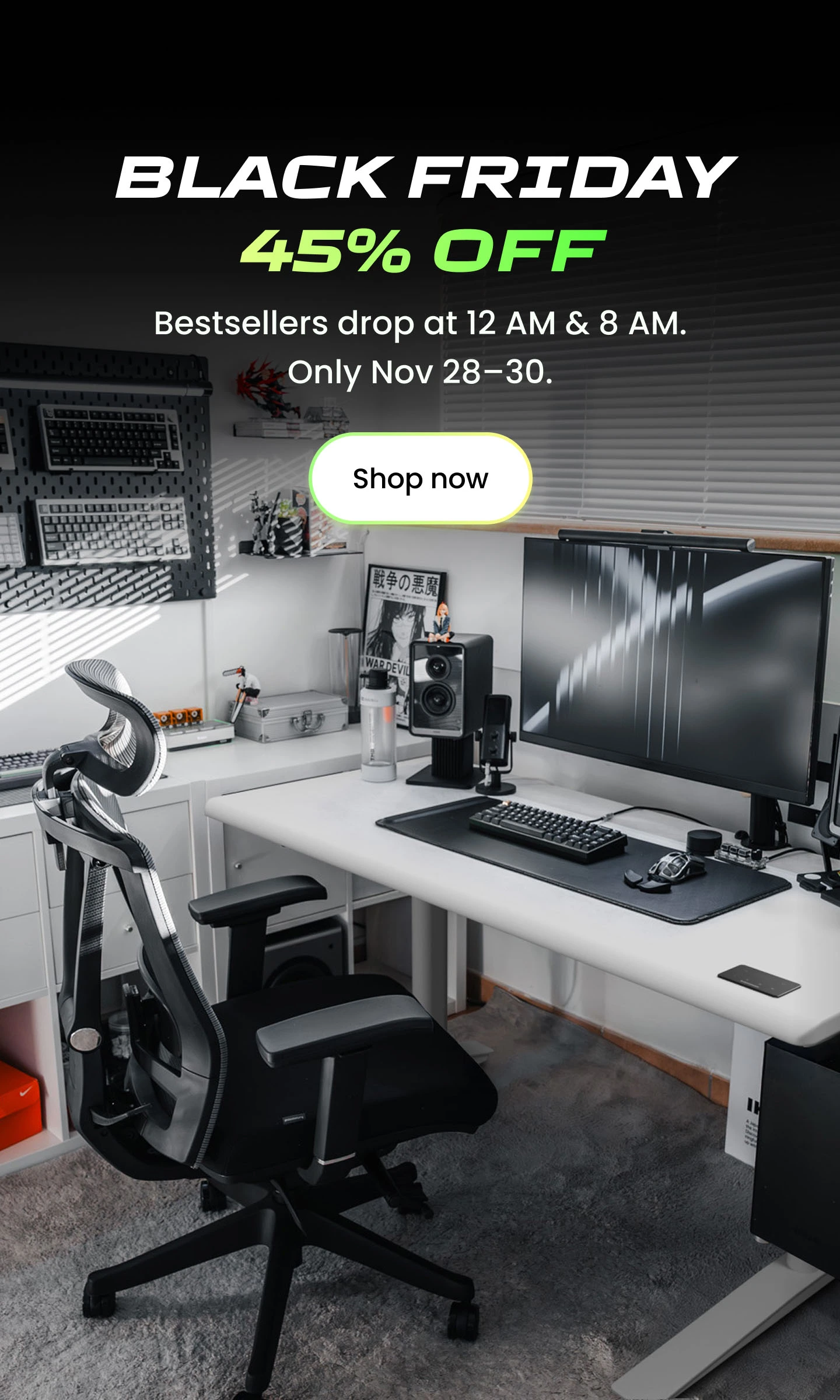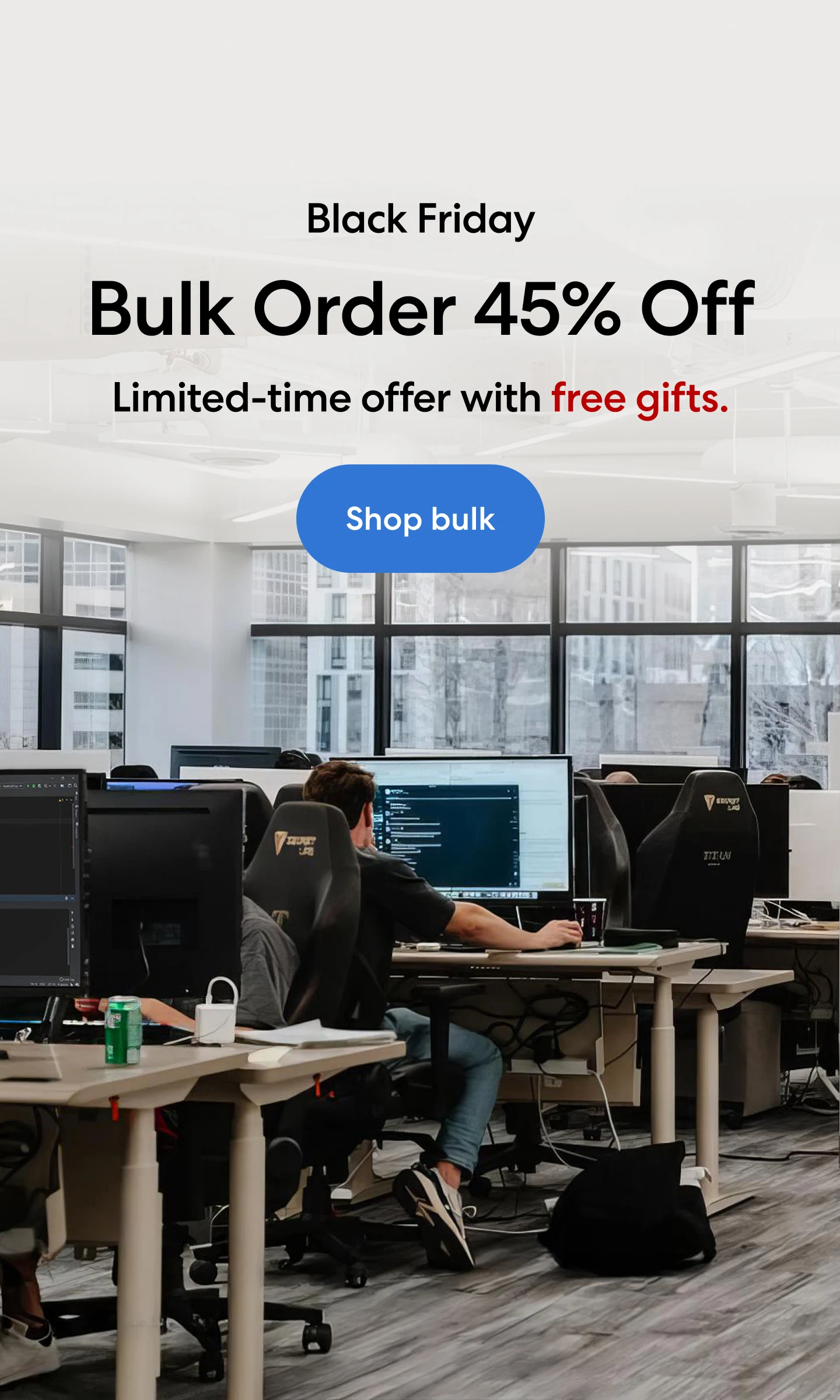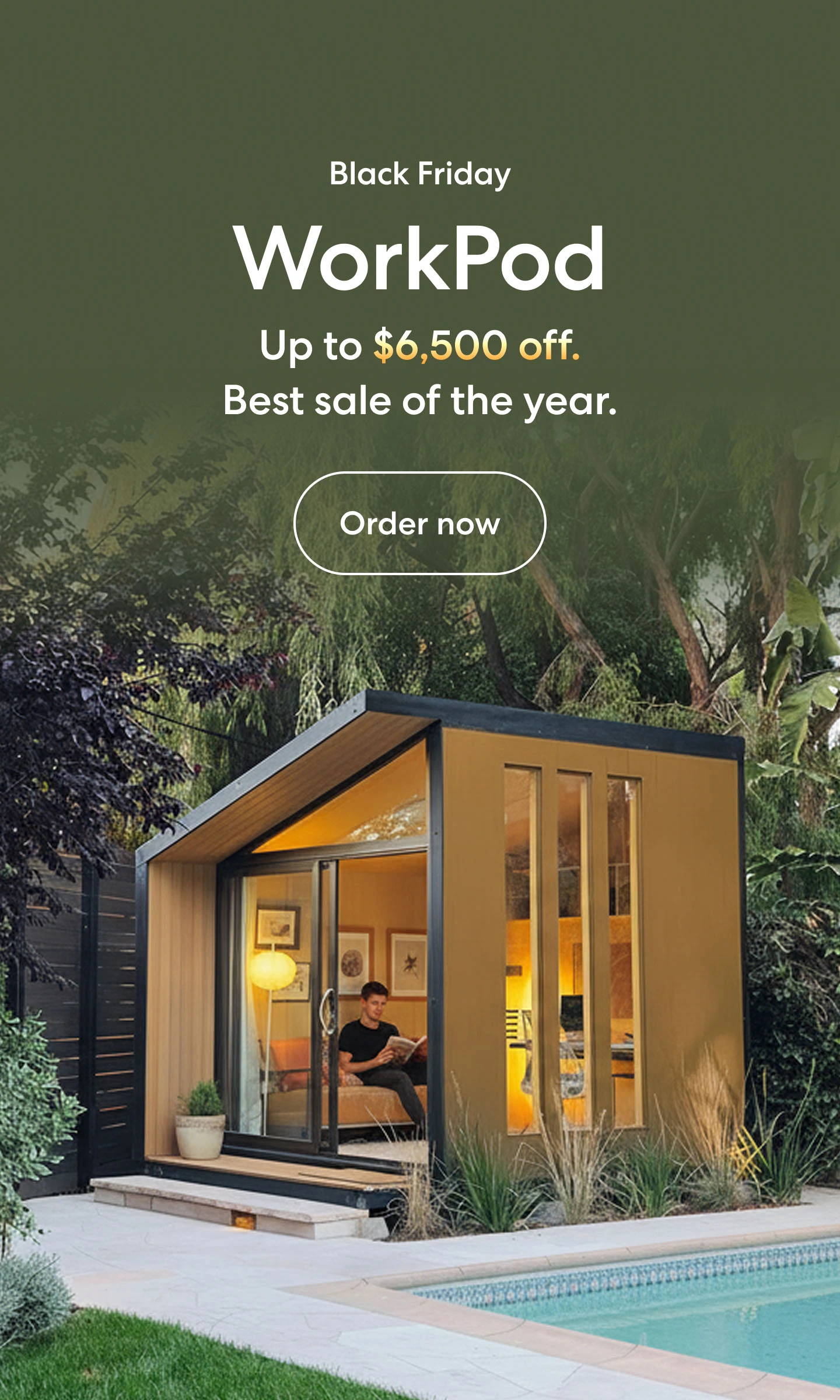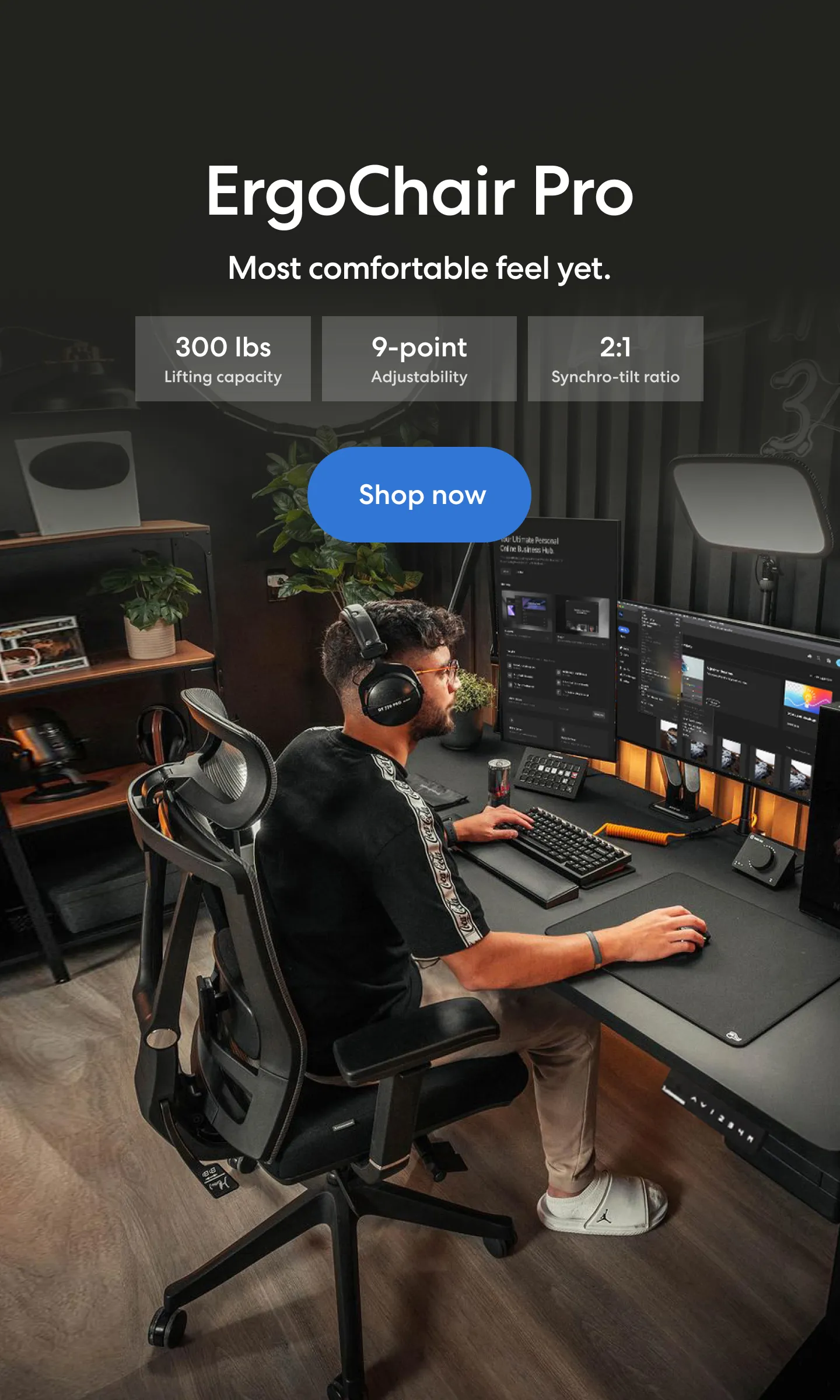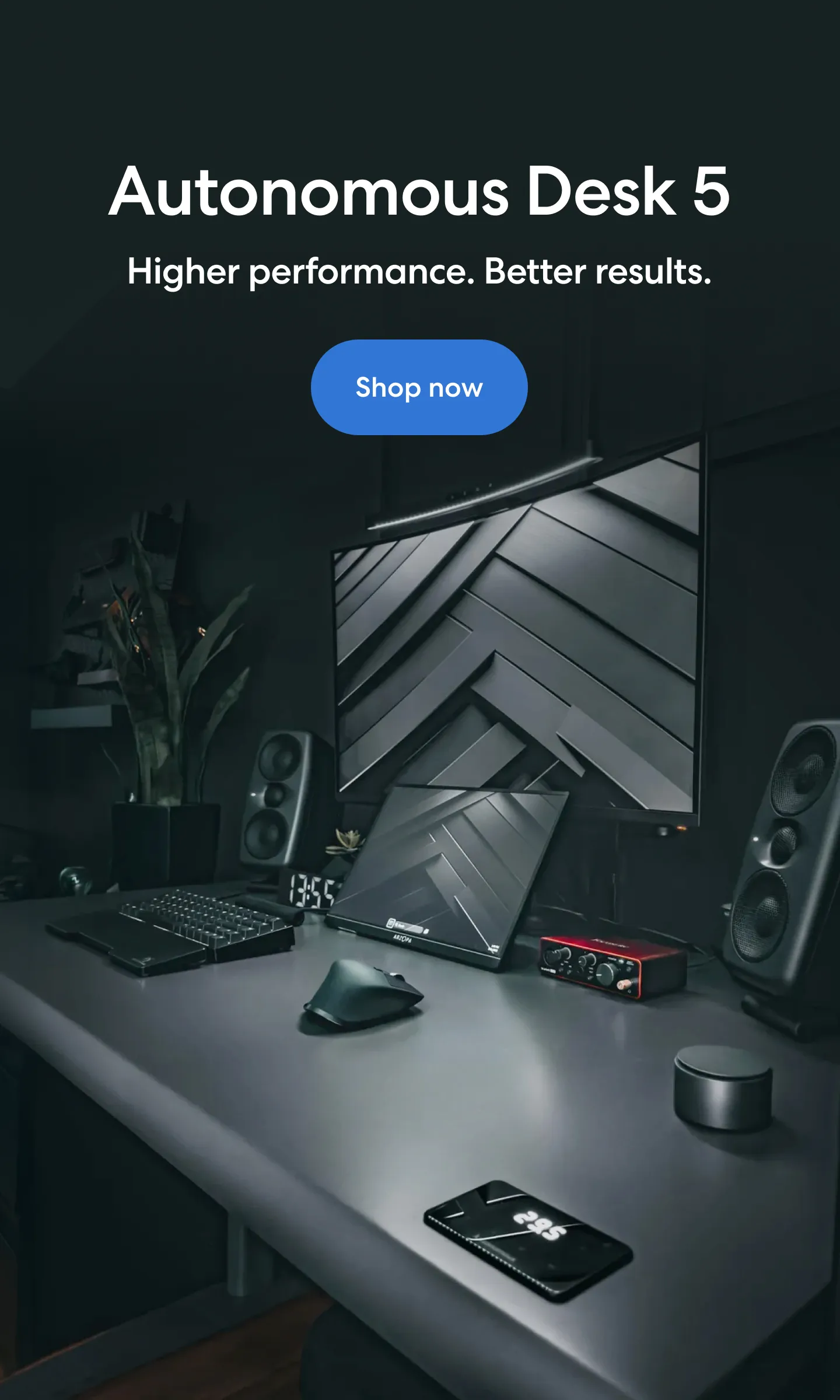.webp)
Table of Contents
- Understanding The Meaning Of The Modern Workforce
- Modern Workforce Trends
- The Role Of Physical Environment In Supporting The Modern Workforce
- Boosting The Productivity Of The Modern Workforce With The Right Office Furniture
- Why Bulk Orders Are The Smart Move For The Modern Workforce
- FAQs
- Conclusion: Equip Your Team for How They Work Today
In today’s flexible work landscape, where remote, hybrid, and in-office teams often overlap, one thing remains constant: people need workspaces that truly support how they work. The modern workforce demands more than just laptops and Wi-Fi — they need physical environments that reduce strain, encourage movement, and help them stay focused.
That’s where the right office furniture comes in. Ergonomic chairs, sit-stand desks, and modular layouts don’t just look good — they actively shape how well people perform, collaborate, and stay engaged. When your workspace evolves with your team, you’re not just keeping up — you’re setting them up to thrive.
Understanding The Meaning Of The Modern Workforce
To create a workspace that truly supports your team, it starts with understanding the people behind it — and what defines the modern workforce today.
The modern workforce refers to today’s diverse, tech-enabled, and distributed employee base. It includes full-time office staff, remote workers, hybrid professionals, freelancers, and gig workers. Unlike traditional 9–5 desk jobs, modern roles prioritize flexibility, autonomy, and purpose. These shifts reflect a deeper cultural change toward value-driven work and life integration.
Understanding the modern workforce's meaning also means recognizing that today’s teams are multigenerational, increasingly global, and expect seamless digital experiences. This diversity requires modern workforce management approaches that accommodate various communication styles, work preferences, and needs across multiple locations.
Recognizing the modern workforce also involves understanding that today’s teams are multigenerational, increasingly global, and expect seamless digital interactions. This diversity demands modern workforce management strategies that cater to various communication styles, work preferences, and individual needs across different locations.
This evolution has significantly altered employee expectations. Today’s workers actively seek employers who offer engaging projects, meaningful professional development, and environments that respect their unique circumstances.
The most successful organizations have responded by developing flexible policies that consistently attract and retain exceptional talent while recognizing that physical comfort directly impacts cognitive performance and long-term career sustainability.
.webp)
Modern Workforce Trends
Several key trends are actively reshaping how businesses support productivity and sustainable growth:
1. Hybrid And Remote Work As The New Standard
What began as temporary flexibility has become a permanent expectation. Today's employees anticipate the freedom to work from anywhere, seamlessly transitioning between home offices, coworking spaces, and traditional office environments throughout their week. This shift has introduced fresh challenges around preserving company culture while ensuring equitable experiences for every team member.
2. Digital Collaboration As The Foundation
Cloud-based platforms, AI-powered assistants, and asynchronous communication tools now form the backbone of modern workflows. Remote-first solutions like intuitive project management dashboards and immersive virtual meeting spaces are streamlining operations while enabling round-the-clock productivity across global time zones.
3. Well-being As A Performance Driver
Mental health support, ergonomic workplace design, and work-life balance have evolved from nice-to-have perks into essential performance drivers. Forward-thinking organizations are moving beyond surface-level benefits to implement comprehensive wellness strategies that measurably improve retention and productivity. This transformation includes everything from dedicated mental health resources to ergonomic furniture investments that support physical comfort during extended work sessions.
4. Continuous Learning As Career Security
Rapid technological advancement has made ongoing reskilling and upskilling critical for both individual career growth and organizational success. Companies are now investing in comprehensive training programs specifically designed for modern workforce development, addressing skills gaps while strengthening talent retention. These initiatives typically feature continuous, digitally-delivered learning experiences tailored to specific roles and career trajectories.
.webp)
The Role Of Physical Environment In Supporting The Modern Workforce
While work arrangements have gained flexibility, the physical environment remains a cornerstone of productivity and long-term well-being. The distributed nature of the modern workforce means productivity impacts from physical discomfort often go unnoticed by managers and colleagues. Unlike traditional office environments, where visible strain might prompt intervention, remote and hybrid workers frequently experience chronic issues that affect long-term career performance in isolation.
Modern workers dedicate substantial hours to desk-based activities across multiple environments, creating a complex web of physical and mental health considerations. The boundaries between personal and professional spaces have blurred, leading to mental fatigue as workers struggle to psychologically "switch off" from work mode while managing constant environmental adaptations.
- Creating Spaces That Adapt To Modern Work Styles
Successful modern workspaces — whether corporate offices or home setups — share common characteristics: adaptability, comfort, and technology integration. Furniture and equipment must support various work modes, from focused individual tasks to collaborative video calls.
The most effective solutions recognize that modern workers need environments that can quickly transform based on daily demands. This flexibility extends beyond just desk arrangements to include lighting, storage, and ergonomic support that accommodates different body types and work preferences.
- Meeting The Needs Of Today's Diverse Workforce
Supporting the modern workforce requires understanding that one size doesn't fit all. Different generations, work styles, and physical needs demand customizable solutions. Organizations that invest in adaptable, high-quality work environments see improved employee satisfaction, reduced turnover, and enhanced productivity across all demographics.
Boosting The Productivity Of The Modern Workforce With The Right Office Furniture
Your team’s performance isn’t just about tools or policies — it’s also shaped by the physical environment they work in. With varied setups across remote, hybrid, and in-office models, it’s crucial to approach office furniture as a strategic investment that supports each type of worker.
Ergonomic furniture plays a central role in meeting the demands of the modern workforce. Whether it’s a remote employee struggling with a kitchen chair, a hybrid worker hopping between mismatched workstations, or an in-office team stuck in outdated setups, poor furniture can silently sabotage productivity. Ergonomic solutions counteract this by creating a baseline of physical support that allows employees to concentrate on deep work without distraction.
Let’s look at how this applies across different work models:
1. Fully Remote Teams
- Challenge:
Remote employees often work from makeshift setups — kitchen tables, couches, or low-cost chairs — that weren’t designed for eight-hour days. Over time, these environments can lead to discomfort, reduced productivity, and even health issues like back or wrist pain.
- Solution:
Support remote workers with ergonomic home office setups. Essentials like adjustable chairs, sit-stand desks, compact storage, and monitor arms help recreate a professional setup that fits limited spaces.
- Impact:
Standardizing remote office furniture ensures your team gets the same ergonomic support regardless of location. This not only improves focus and physical comfort but also signals that your company values employee well-being and performance.
- Autonomous tie-in:
Autonomous offers curated remote office furniture packages that ship directly to employees’ homes, including ergonomic chairs, compact desks, and flexible accessories — making it easy to scale remote work support across time zones.
.webp)
2. Hybrid Teams
- Challenge:
Hybrid workers often rotate between home and office, sharing workstations or moving between departments. Without adaptable setups, they waste time readjusting to uncomfortable or cluttered environments.
- Solution:
Use furniture designed for flexibility. Height-adjustable desks, dynamic chairs with quick-adjust features to promote active sitting, and office accessories like laptop stands or docking stations let multiple people use the same space comfortably.
- Impact:
When each space can adapt to the user within seconds, hybrid teams experience fewer friction points, better ergonomics, and more consistency — all contributing to smoother transitions between work modes.
- Autonomous tie-in:
Autonomous desks and chairs are built for adaptability, making them ideal for hot-desking setups or rotating schedules. Features like programmable height presets and adjustable lumbar support ensure comfort for every user.
Pro Tips:
- Choose office chairs with adjustable armrests and desks with memory settings to accommodate fast transitions.
- Add locker storage, mobile pedestals, filing cabinet for personal items to reduce workspace clutter.
- Use color-coded zones or signage to help users quickly find their preferred setup type (quiet focus vs. collaboration).
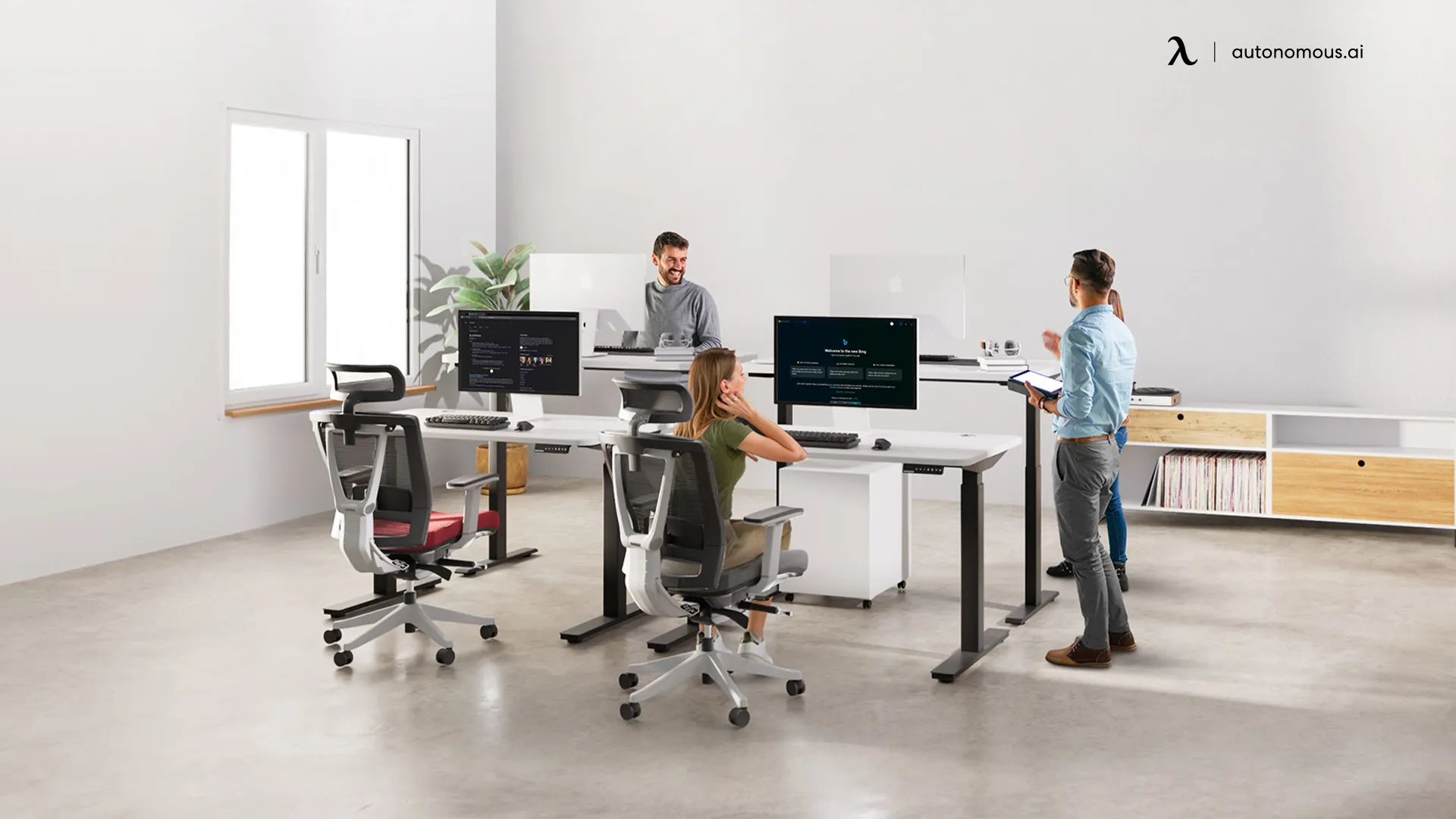
3. In-Office Teams
- Challenge:
Many traditional offices are still built around cubicles and fixed layouts that restrict movement and limit collaboration. These environments can feel outdated and hinder both productivity and morale.
- Solution:
Reimagine the office with open layouts, acoustic panels for noise control, lounge breakout areas, and ergonomic workstations that promote movement and focus. Include sit-stand desks, collaborative meeting pods, and designated wellness zones.
- Impact:
A thoughtfully designed office encourages natural movement, reduces physical strain, and creates a more engaging atmosphere for employees who work on-site full-time. It also reinforces company culture and fosters stronger teamwork.
- Autonomous tie-in:
From collaborative seating to conference tables and modular desking, Autonomous furniture packages help create modern in-office environments that feel fresh, functional, and inviting.
Pro Tips:
- Integrate wellness areas with ergonomic recliners or quiet pods to support breaks and mental reset.
- Install anti-fatigue mats at standing desks to reduce leg strain.
- Consider offering height-adjustable meeting tables to promote movement even during long discussions.
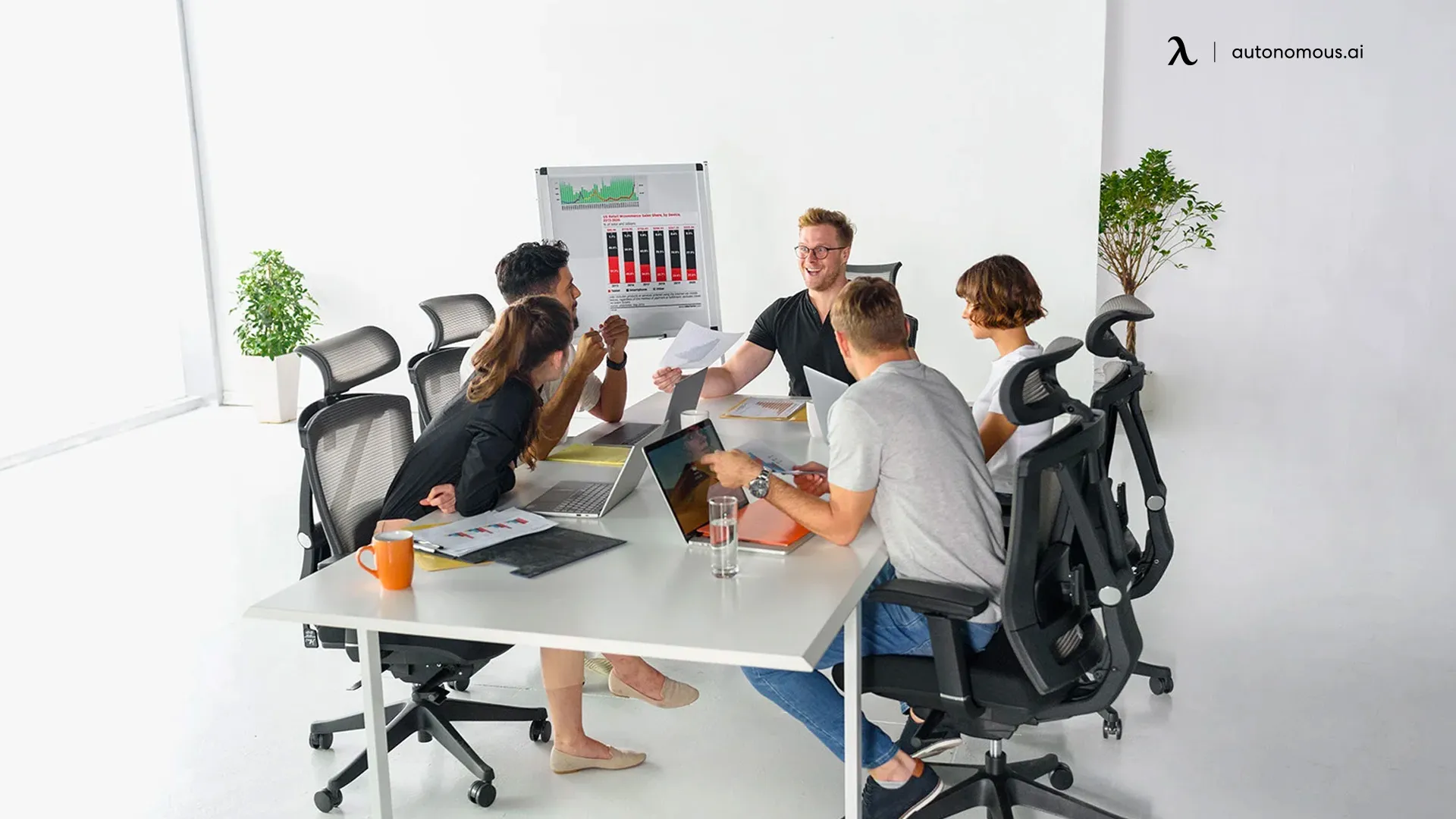
Why Bulk Orders Are The Smart Move For The Modern Workforce
For fast-growing teams or companies supporting multiple work models, buying in volume is a scalable solution. Here are some of the key benefits of office furniture bulk orders for modern workforce solutions:
- Cost savings: Lower per-unit pricing and consolidated shipping
- Consistency: Unified look and feel across remote and in-office setups
- Ease of deployment: Coordinate large-scale rollouts without logistical headaches
- Custom packages: Mix-and-match desks, chairs, and accessories tailored to department needs
As the modern workforce expands across cities, time zones, and functions, scalable modern workforce management must include logistics-friendly solutions that meet people where they are. Bulk orders make this possible.
Looking to support your modern workforce with consistent, cost-effective setups across locations? Check out Autonomous bulk office furniture orders designed to scale with your team — whether remote, hybrid, or in-office.
FAQs
1. Why is ergonomic furniture important for the modern workforce?
It improves health, prevents injury, and boosts focus, especially for hybrid and remote employees spending long hours seated.
2. What’s the best way to equip both remote and in-office employees consistently?
Use a unified supplier that offers remote delivery and bulk office packages to maintain quality and brand identity across locations.
3. What is the definition of the modern workforce?
The modern workforce includes a mix of remote, hybrid, freelance, and full-time staff empowered by technology and driven by flexibility.
4. How do modern workforce trends impact office design?
They drive the shift toward flexible, tech-enabled, wellness-focused spaces that support both collaboration and individual work.
.webp)
5. What’s included in a modern workspace setup?
Typically includes an adjustable desk, ergonomic chair, storage unit, desk lamps, and digital tools for collaboration.
6. How do I support training initiatives for my distributed team?
Pair your digital training strategy with physical workspace improvements to reinforce learning and productivity at home or in the office.
7. Are bulk office furniture packages worth it for small companies?
Yes — even orders as small as 3 units can unlock discounts and help maintain consistency for growing teams.
9. What is the role of AI in the modern workforce?
AI helps automate repetitive tasks, support data-driven decisions, and enable smarter workflows. In modern workforce management, AI tools also assist with scheduling, onboarding, focus tracking, and training personalization.
10. What are the biggest challenges facing the modern workforce today?
The modern workforce faces "tech neck" from extended screen time, Zoom fatigue from digital collaboration, blurred work-life boundaries, and the need to create productive environments across multiple locations while maintaining career growth and job satisfaction.
11. How does the modern workforce differ from traditional employees?
Unlike traditional 9-5 office workers, the modern workforce prioritizes flexibility, purpose-driven work, and autonomy. They're multigenerational, globally distributed, expect seamless digital experiences, and require adaptive work environments that support various communication styles and work preferences.
.webp)
Conclusion: Equip Your Team for How They Work Today
Understanding the modern workforce means recognizing that their success directly impacts your organization's competitive advantage. This multigenerational, globally distributed talent pool experiences unique challenges: extended screen time leading to "tech neck," cognitive fatigue from constant digital collaboration, and the physical strain of adapting to varied work environments throughout their day.
The modern workforce doesn't just expect more than a desk and a chair — they require adaptive, health-conscious, and productive work environments that acknowledge their diverse needs and support their long-term career sustainability. From addressing the productivity impacts of physical discomfort to accommodating the device-hopping behaviors that define modern work, successful organizations recognize that workforce wellness is a strategic business imperative.
As the modern workforce continues to evolve, organizations that proactively address these realities through thoughtful workspace strategies will consistently outperform competitors in talent attraction, employee retention, and overall productivity. Supporting the modern workforce isn't just about meeting current expectations — it's about creating environments where today's diverse, purpose-driven professionals can deliver their best work while maintaining the health and satisfaction that drives long-term success.
The companies that thrive in tomorrow's marketplace will be those that understand the modern workforce today and invest in solutions that honor both their professional ambitions and their human needs.
Spread the word
.svg)

.jpg)

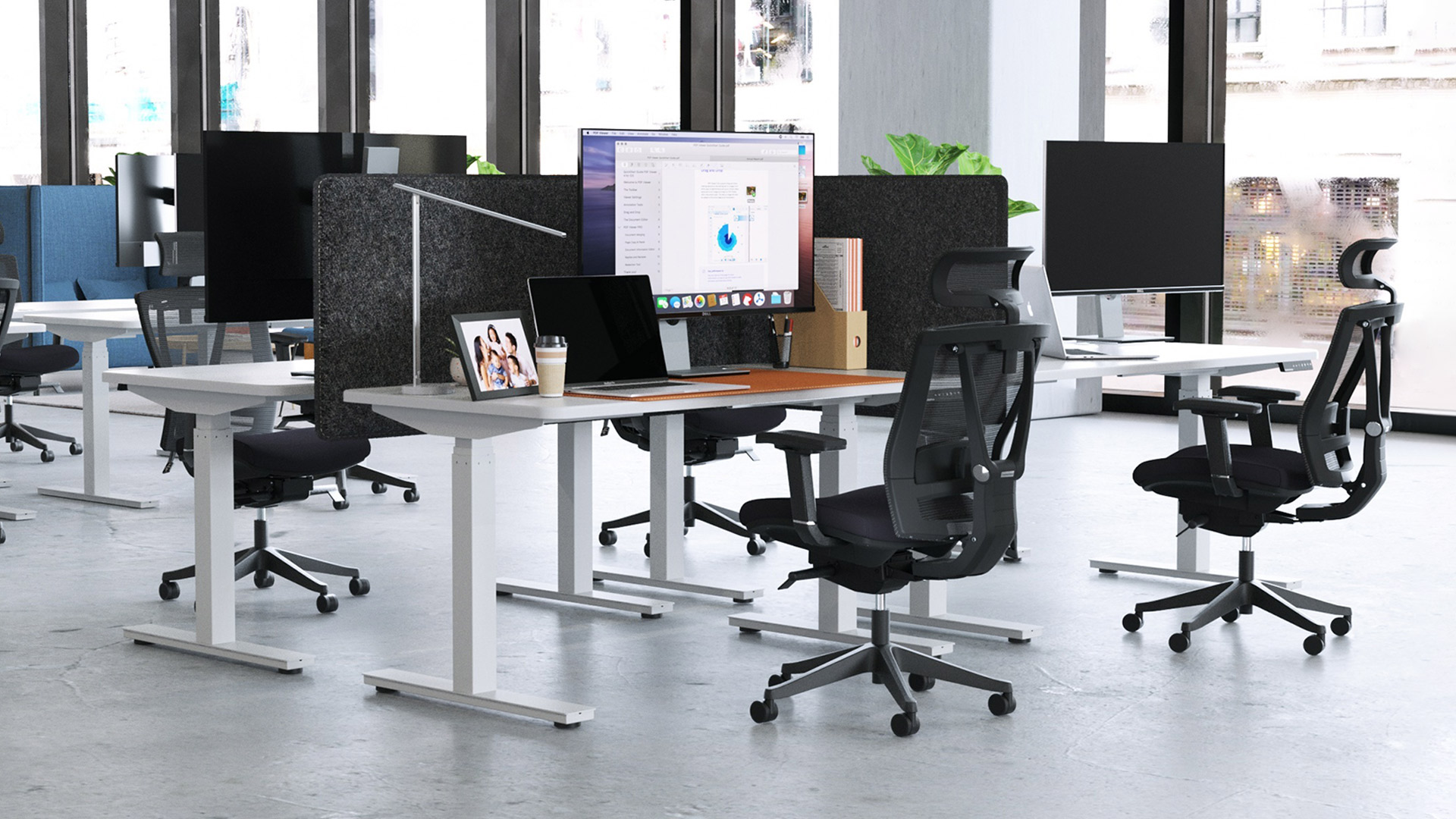

.webp)

